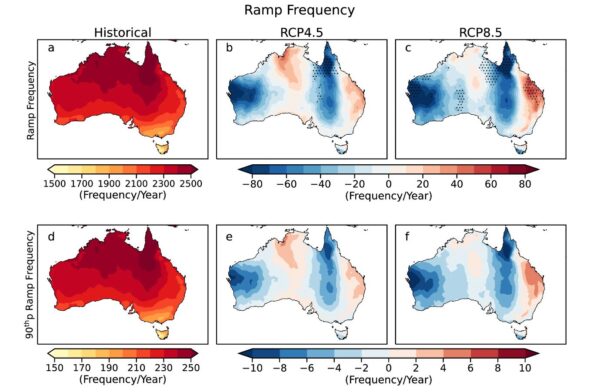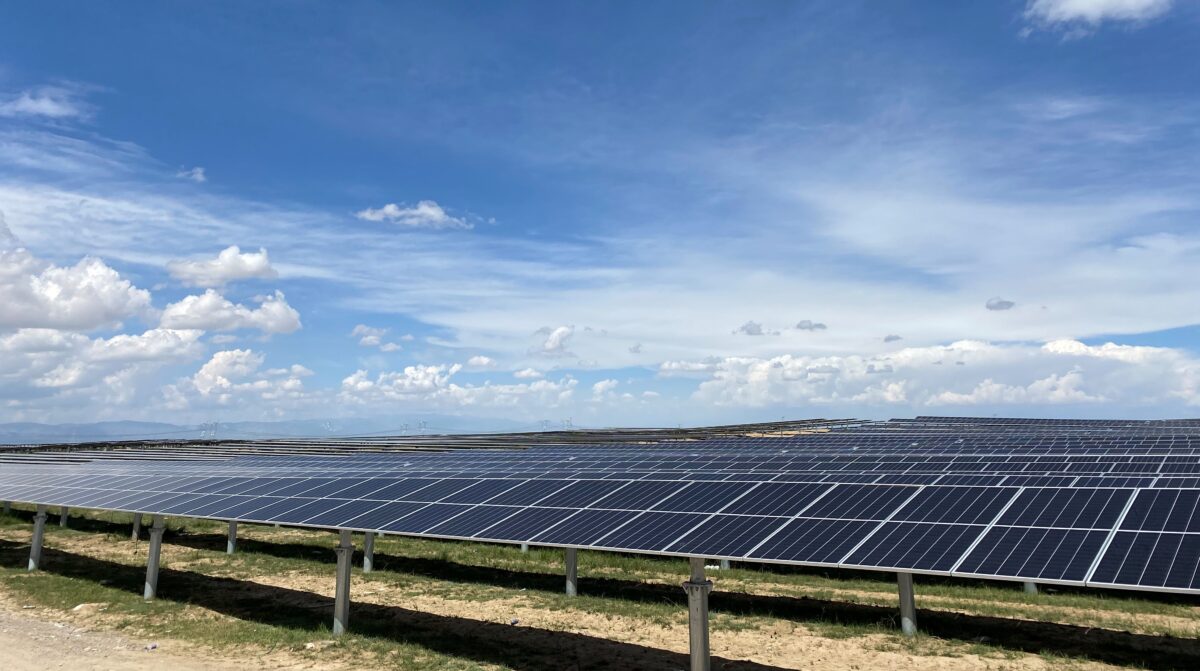Modelling conducted by researchers from the University of New South Wales (UNSW) Sydney shows the magnitude, frequency and duration of disruptive solar generation ramps, due to factors like cloud cover and seasonal cycles, will change significantly over the next century, potentially threatening the stability of Australia’s energy network.
The work, published in Scientific Reports, show ramp events that result in a sudden increase or decrease of outputs are likely to become longer and more frequent, in particular across the east coast and parts of northern Australia, although their magnitude will likely reduce.
The modelling indicates up to 5% changes in the future ramp frequency and periods when compared to the historical baseline. Sudden variability can lead to mismatches between electricity supply and demand, which, if unmanaged, can cause power outages or complete grid failures.
With Australia increasing its reliance on large-scale solar, the researchers said the findings underscore the importance of designers of utility scale solar plants including an appropriate storage facility to manage curtailment and energy deficit periods to maintain a supply–demand ratio.
“This work highlights the importance of considering future changes in climate when designing large-scale solar farms to ensure the incorporation of frequency control devices and storage plans for a reliable power supply,” they said.
“Further, it is of utmost importance to consider the future changes in the intermittency and ramp features due to climate change while selecting optimal locations for deploying future PV plants.”

Image: UNSW
Shukla Poddar, lead author of the study and a PhD candidate at the School of Photovoltaics and Renewable Energy Engineering, said weather-induced variability in solar power generation can lead to mismatches between electricity supply and demand, which, if unmanaged, can cause power outages or complete grid failures.
“Solar PV generation is affected by climate factors, which makes it susceptible to climate change,” she said.
“For example, changes to the way clouds pass over solar panels could cause sudden decreases (ramp-downs) or increases (ramp-ups) that can cause voltage fluctuations and blackouts.”
Merlinde Kay, co-author of the study and lecturer at the School of Photovoltaic and Renewable Energy Engineering, said the modelling is essential for grid operators who need to understand how these ramp events will alter with climate change.
“They need to be prepared with the proper technologies and strategies to manage more regular intermittency issues,” she said, noting that managing the fluctuations caused by solar ramps is possible through mass storage technology and diversifying the renewable energy mix in the grid.
“During ramp-up events, large batteries can store excess solar to help reduce the strain on the grid,” she said. “In a ramp-down event, the stored energy can be fed back into the grid to help compensate for the loss in solar power and maintain grid stability.
“Combining this with renewable energy technologies like wind, which can operate at night, is also essential, and is already working quite well in places like South Australia at the Hornsdale Power Reserve with the Tesla battery powerpack.”
The researchers also said building solar farms in optimal locations is another strategy for mitigating against power ramps and hope the findings of their study will help inform future solar farm developments both in Australia and internationally.
“The framework we’ve developed here to study future ramp events spatiotemporally using climate modelling can be applied to different places around the world to ensure optimum grid operations in the future as the climate changes,” Poddar said.
This content is protected by copyright and may not be reused. If you want to cooperate with us and would like to reuse some of our content, please contact: editors@pv-magazine.com.









By submitting this form you agree to pv magazine using your data for the purposes of publishing your comment.
Your personal data will only be disclosed or otherwise transmitted to third parties for the purposes of spam filtering or if this is necessary for technical maintenance of the website. Any other transfer to third parties will not take place unless this is justified on the basis of applicable data protection regulations or if pv magazine is legally obliged to do so.
You may revoke this consent at any time with effect for the future, in which case your personal data will be deleted immediately. Otherwise, your data will be deleted if pv magazine has processed your request or the purpose of data storage is fulfilled.
Further information on data privacy can be found in our Data Protection Policy.